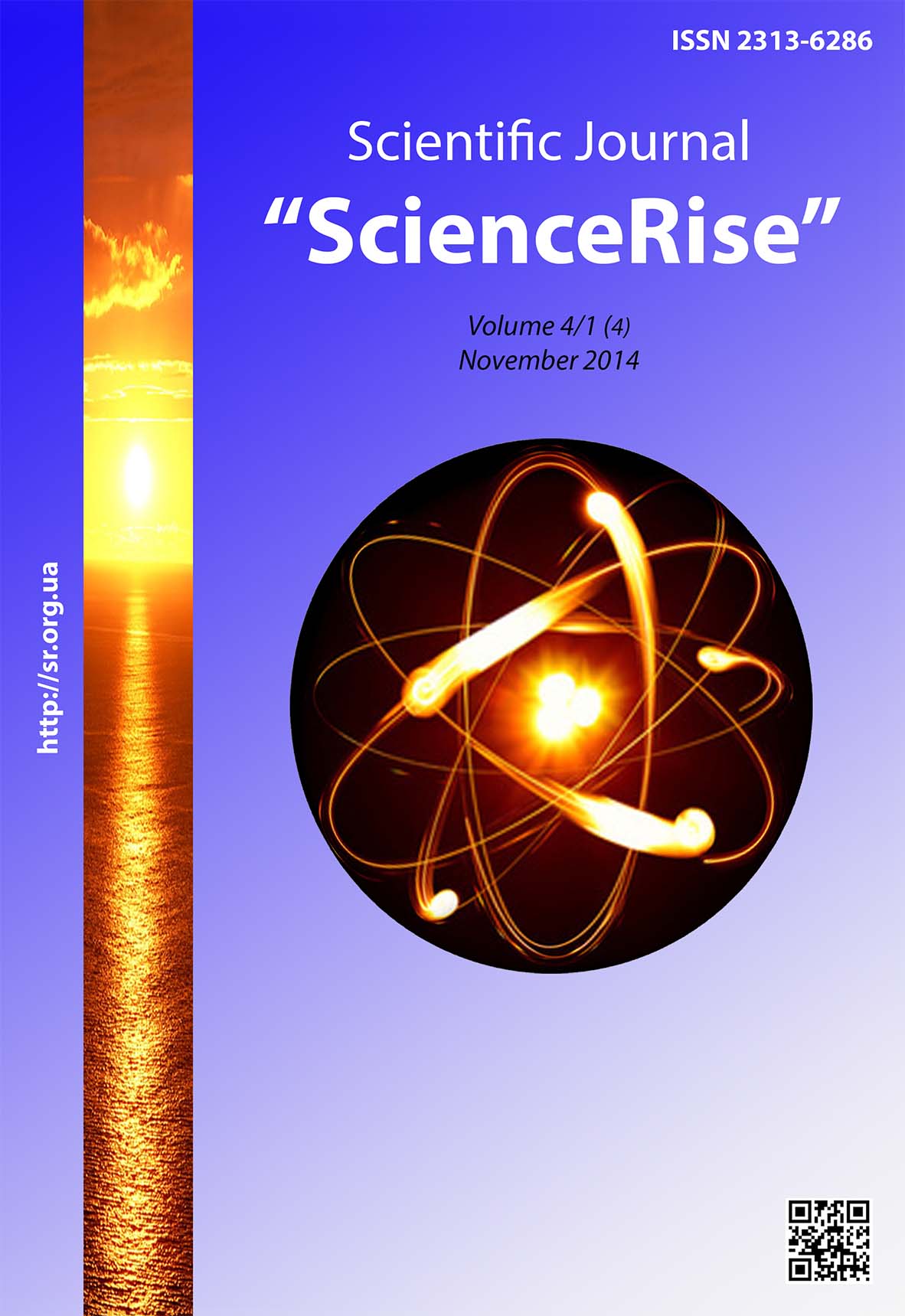Тhe chronobiological passport as day mode optimization means of students of classical university
DOI:
https://doi.org/10.15587/2313-8416.2014.29099Keywords:
desynchronosis, adaptation, chronobiological type, chronobiological approach, chronobiological passport, rythmofilic typeAbstract
One of reasons of health state worsening of young people is inconsistency of internal biorhythms and basic cycles of «labour and rest», «dream and vigil» and diet. The problem of desynchronize prophylactics for students consists of planning and optimization of the daily routine taking into account the biorytmological types of people. Тhere chronobiological passport is health monitoring system of students with the use of chronobiological approach.
References
Коlyada, Т. I., Vоlyanskij, U. L., Vasil’ev, I. V., Маl’cev, V. I. (1995). Аdaptacijnij sindrom i immunitet. Kharkov: Оsnova, 368.
Тimchenko, G. M. Chronobiologichnij pіdhіd chоdо оcinki stanu zdorovya studentiv (2011). Vіsnik Kharkivskogo nаcіоnalnogo universiteta іmenі V. N. Каrazіnа. Serija: Bіоlоgija, 13 (947), 190–195.
Тimchenko, A. N. (2012). Chronobiologichnij passport. Меtodicheskoe posobie. Kurs «Оsnovi biorythmologii». Kharkiv: Kharkiskij nаcіоnalnij universitet іmenі V. N. Каrazіnа, 66–72.
Kоmаrov, F. I., Rаpoport, S. I. (2000). Chronobiologija i chronomedicina. Мoskva: Тriada, 488.
Аgadganjan, N. А., Petrov, V. I., Rаdysh, I. V., Kraushkin, S. I (2005). Chronofiziologija, chronofarmocologija i chronoterapija. Vоlgograd: Izdztelstvo Volgogradskogo gosudarstvennogo medicinskogo universiteta, 336.
Shaposhnikova, V. I., Таjmazov, V. А. (2005). Chronobiologija i sport. Мoskva: Sоvetskij sport, 180.
Downloads
Published
Issue
Section
License
Copyright (c) 2014 Ганна Миколаївна Тимченко

This work is licensed under a Creative Commons Attribution 4.0 International License.
Our journal abides by the Creative Commons CC BY copyright rights and permissions for open access journals.
Authors, who are published in this journal, agree to the following conditions:
1. The authors reserve the right to authorship of the work and pass the first publication right of this work to the journal under the terms of a Creative Commons CC BY, which allows others to freely distribute the published research with the obligatory reference to the authors of the original work and the first publication of the work in this journal.
2. The authors have the right to conclude separate supplement agreements that relate to non-exclusive work distribution in the form in which it has been published by the journal (for example, to upload the work to the online storage of the journal or publish it as part of a monograph), provided that the reference to the first publication of the work in this journal is included.

